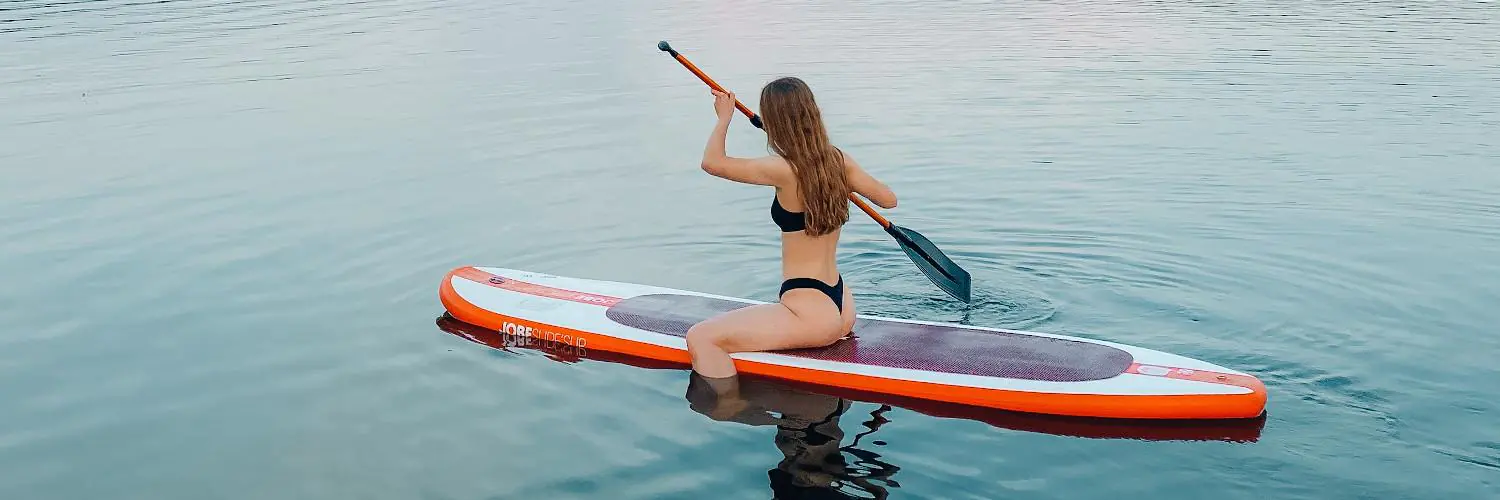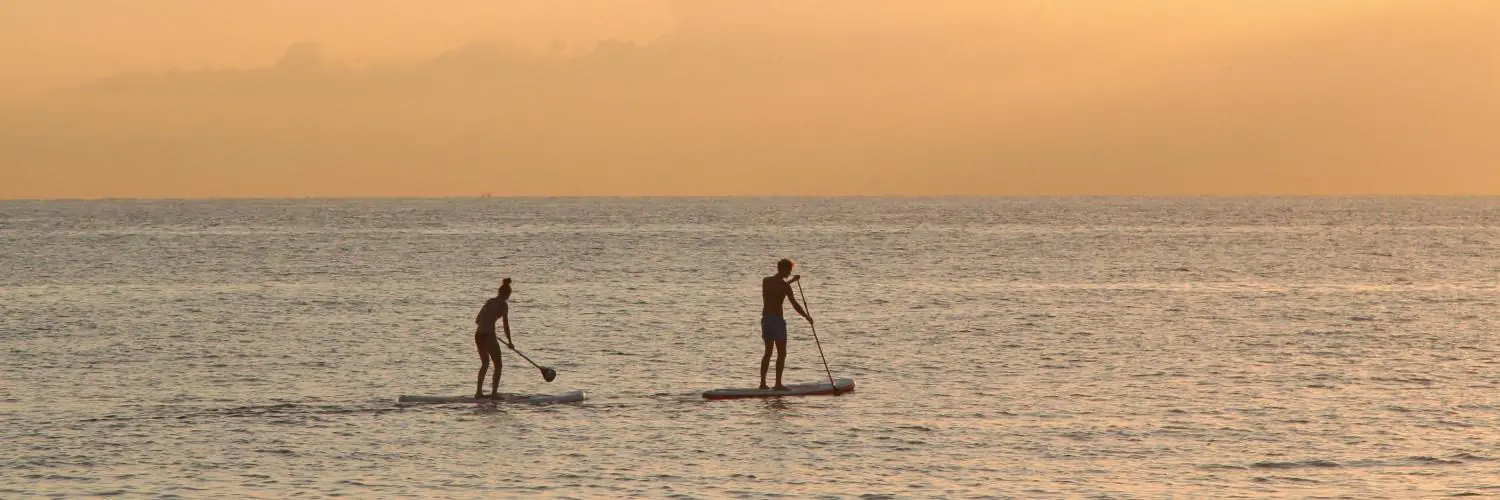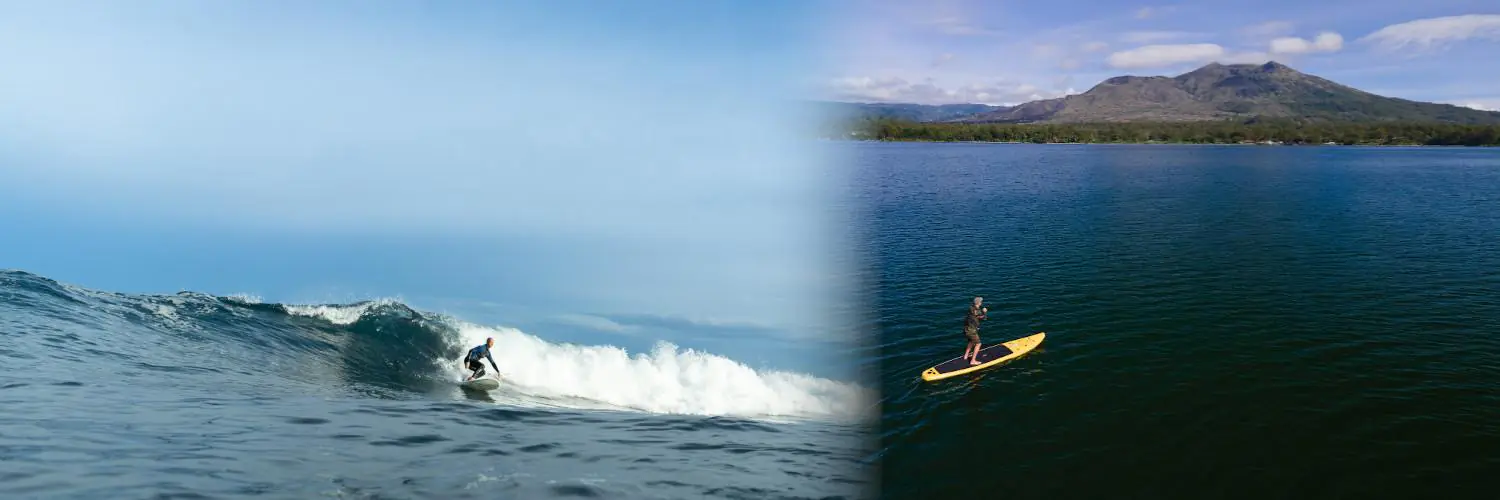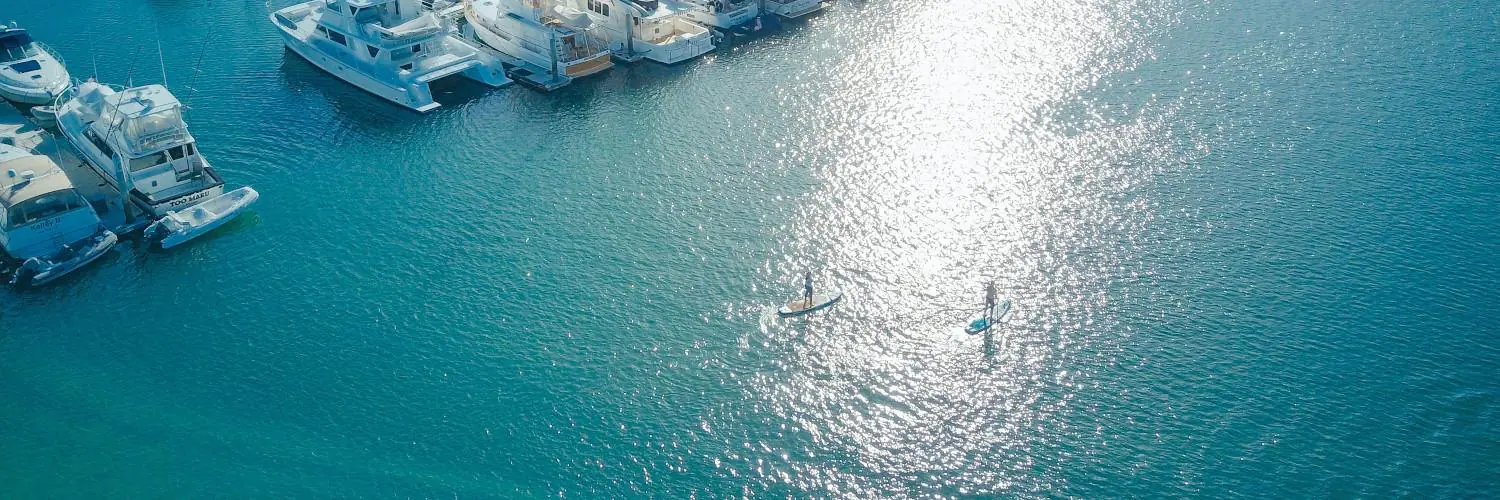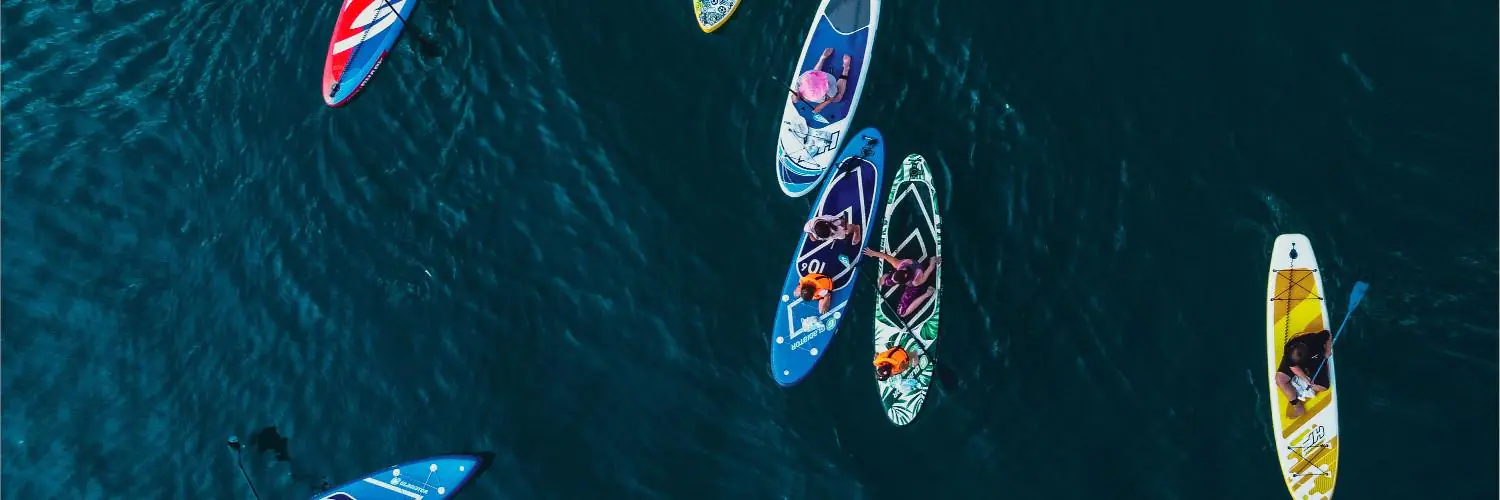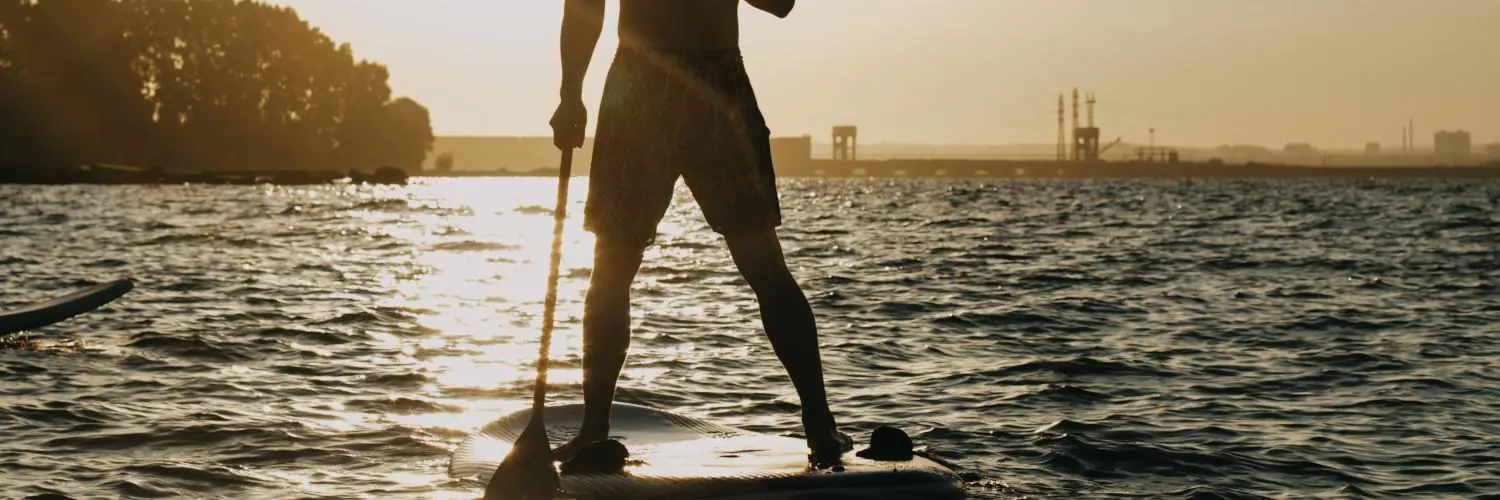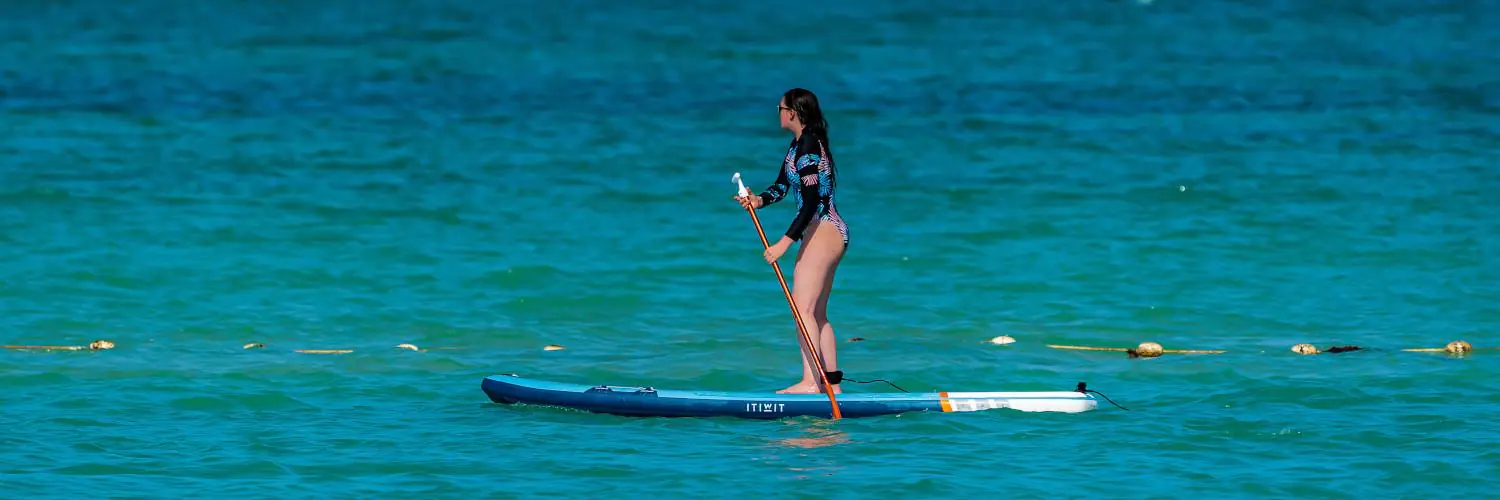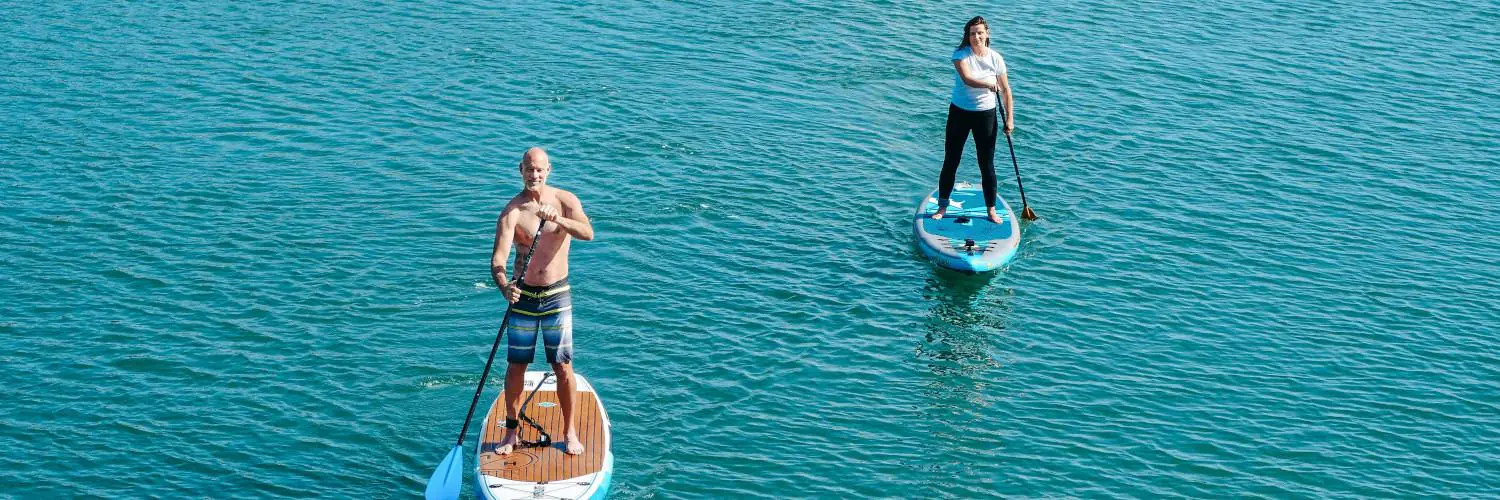Yes, you can stand up paddle board anywhere there is water.
It is a versatile sport that is enjoyed by all ages on several types of waterways. Weather conditions can influence your trip to some extent as it is hard to paddle in the sea in case of wind storms and large waves. But depending on your skill level, you can paddle board on any body of water.
Oceans, rivers, ponds and lakes are the most common locations for this sport. However, a lot of people use their paddle boards at whitewater locations, icy ravines, and indoor pools. You can practice on any body of water but calmer water is always recommended in case you are a beginner. Stand up paddle boarding can be slow and meditative or fast paced and intense. Many people try paddling on adventurous locations such as the breaking waves of the ocean, wetlands, and harbors but mostly enjoy paddling on calmer water. Stand up paddle boarding is expanding to water bodies that once seemed reckless to visit. Swampy wetland areas, pounding ocean waves, and frosty whitewater are the new domains for paddle boarding.
Table of Contents
Where can you SUP?
Here is an incomplete list of possible locations where stand up paddle boarding is possible and it covers nearly all of the water body types:
- Lakes
- Rivers
- Harbors
- Large indoor pools
- Ponds
- Seas and oceans
SUP in Lakes
Lakes are the ideal location for paddle boarding in case you are a beginner. You can practice your balance and try different techniques such as turning, stopping, and bailing out. If you are using a solid board, then practice falling off your board correctly. Aim your body towards the water and avoid hitting the board.
Paddle boarding in rivers
They are popular destination for beginners but some sections of rivers might not be suitable where the river current increases speed and becomes rapid. Paddling on rapid river currents require substantial amount of skill and added protection such as a life jacket, helmet, and a wet suit. White water trips, especially river rapids, must not be attempted by beginners. However, most rivers have long stretches of slow moving water which is ideal for recreational boarders.
Stand up paddle boarding in harbors
Small harbors with low traffic are perfect for SUP. One should try to avoid busy areas that have significant amount of commercial vessels entering and leaving the port. You should check with local authorities if boarding is allowed or not before going with your board.
Paddle boarding in indoor pools
You can try boarding in indoor pools provided they are large enough. Wear a helmet for your safety because you are vulnerable to get injured by concrete edges of the pool in case you fall. Make sure your board is clean enough as residue from the ocean, pond, or river can affect the pool’s level and at the end, one might need to clean the pool.
SUPing in ponds
Ponds are an ideal location for rookies and even for experienced boarders looking for a relaxing trip. Before going to paddle in ponds, one should learn about what kind of wildlife inhabit the area, such as the danger of a crocodile or two lurking in there.
Stand up paddle boarding in oceans
The beach of any ocean or sea provides adventurous paddle boarders with more significant challenges because of waves. The long paddle helps surfers move their way towards the deeper waters. Being a paddle boarder, you can enjoy all types of waves whether big or tiny.
You can stand up paddle board anywhere
Paddle boarding can be done on anybody of water. You can choose your location according to your passion and skillset. Swapping to a different fin setup is advisable depending on your location.

